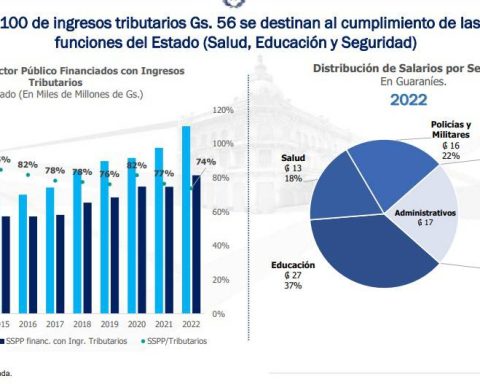With some 228 reported cases of acute pediatric hepatitis of unknown origin, according to data from the World Health Organization (WHO), the scientific community is looking for its causes and, although there are several open hypotheses, some indications point to an adenovirus, F41.
The professor of Microbiology at the University of Salamanca (USAL) -northwestern Spain- Raúl Rivas reviewed with EFE, in six questions, what is known and what is still unknown about this disease, of which cases have been reported in a twenty countries.
In Spain, 22 cases have been investigated since January, according to data from April 29. In four of the nine cases analyzed in which results are available, a positive test for adenovirus was obtained.
At the moment, Rivas indicated, there are more questions than answers about the cause of this disease, which affects from infants to 16-year-olds and has caused at least four deaths worldwide.
1.- What is known about the possible cause of acute pediatric hepatitis?
At this time, it is still difficult to say anything about it, they are all hypotheses, although “the microbiological window is wide open” because there is no other issue that shows a common pattern, neither in terms of environmental issues, exposure to toxic agents or food.
Samples continue to be collected and the WHO has requested that the possible presence of some viruses be analyzed, but those that cause hepatitis A, B, C, D and E are currently ruled out because they have not appeared.
2.- What hypotheses are considered?
Adenoviruses such as F41, which is a very specific serotype of enteric adenoviruses and normally cause intestinal symptoms, have appeared in some samples, but until now it had not been seen that it could cause such frequent damage in healthy children.
It is a sign that “we must be alert” to see if a new serotype of adenovirus is circulating, “we don’t know”; if the F41 has had a mutation that favors viral tropism (specificity to infect a particular type of cell or tissue) towards the liver, or if there is a co-infection with another virus.
Nor can it be ruled out that it is an undescribed virus or for which this symptomatology has not been established. “Various hypotheses are open.”
Another is that SARS-CoV-2 may have favored co-infection with other viruses that can cause damage of this type. This virus that causes covid-19 has been found in some samples.
SARS-CoV-2 is circulating and many of the problems that it can cause or that it favors other types of infections are unknown because “it leaves our immune system a little decimated. These are things that we still don’t know.”
3.- Would the adenovirus F41 be the most probable hypothesis?
It is a hypothesis, but it is not certain. Until now it has appeared in a “high percentage” of samples, it has been seen, above all, in Alabama (USA), in some European and elsewhere, but not in all. The first Asian case, which was registered in Japan a few days ago, “seems to be that it tested negative for F41”, so it must continue to be analyzed.
4.- Have adenoviruses caused hepatitis before?
Adenoviruses are quite common and circulate around the globe throughout the year, although most of the peaks usually occur in late winter or spring. Some can cause liver damage, especially in immunocompromised children, but have not been seen in healthy children.
5.- Two years of pandemic, wearing a mask and with social distance measures may have weakened the immune system of children?
It is difficult for this to be the case because there are minors affected up to 16 years of age. Before the pandemic, children aged five, six years and older were in frequent and permanent contact with adenoviruses.
“It is difficult to think” that, due to the fact of having worn a mask, now an adenovirus can affect this way, suddenly.
6.- What is needed to determine the cause of this type of hepatitis?
The logical thing at this time is what is being done, collect as much data as possible and this implies determining all samples of feces, urine, blood, liver biopsies, both present and old cases, as the WHO has urged.
It may be that the distribution of cases is wide, not only geographically but over time, that it comes from the past and we are beginning to see it now, that is why it is requested that samples of clinical cases that presented this symptomatology in the past months be analyzed.
It is also possible that we are “at the tip of an iceberg because only the most serious cases are seen.”
Different microbiological agents must be searched, focusing on adenoviruses, but also on other possibilities to establish if these cases have something in common.
“Many doors are still open”, that is why it is necessary to collect the maximum data and, above all, be attentive to symptoms in children such as jaundice, white stools and dark urine, so that primary care centers collect them and do the tests. pertinent evidence, to have as much information as possible that “shows which agent may be involved”.

















